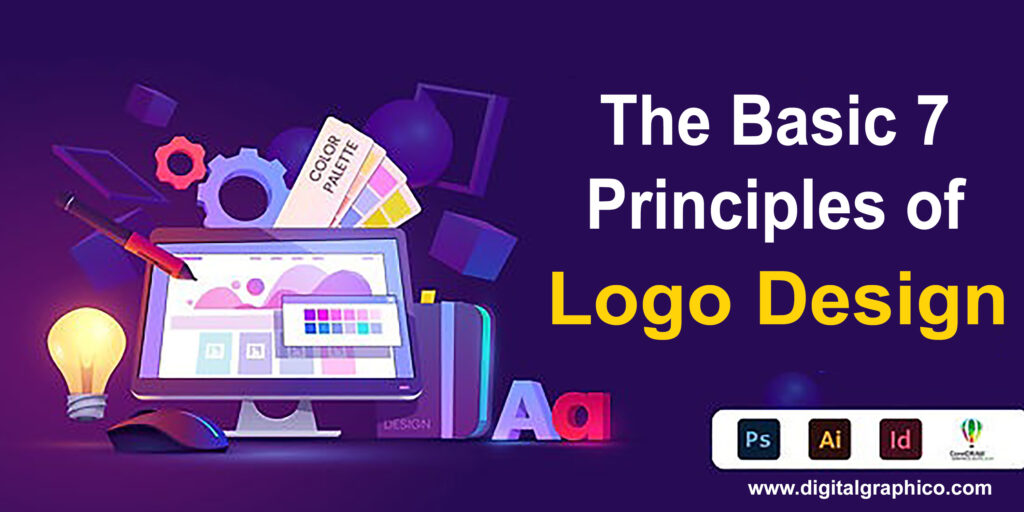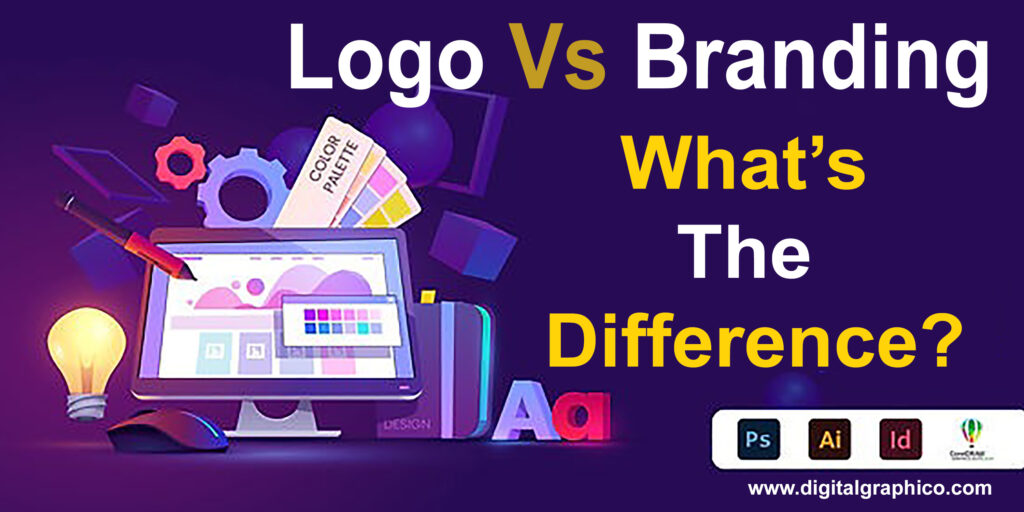The Basic Principles of Logo Design and Graphic Design
In the digital age, a logo is not just a symbol; it’s the visual representation of your brand’s identity. Whether you’re a small business owner, an entrepreneur, or a budding graphic designer, understanding the basic principles of logo design is crucial for creating an impactful impression. If you’re exploring this fascinating field, consider enrolling in a graphic design institute to hone your skills further. In this blog post, we will explore the fundamental principles behind effective logo design that can help you craft a logo that truly represents your brand’s essence.

1.Simplicity: Less is More
One of the core principles of logo design is simplicity. A complex logo can confuse viewers and diminish brand recognition. Think of some of the world’s most recognizable logos – the Apple logo, Nike’s swoosh, or the McDonald’s arches. Each of these logos is simple yet iconic.
By keeping your logo design simple, you ensure that it is easily recognizable at a glance. A clean design tends to be more memorable for your audience, making it easier for them to recall your brand in the future. If you are diving into logo design through a graphic design institute, you will learn techniques to distill your ideas into their most essential forms.
2.Memorability: Make It Stand Out
A memorable logo sticks in the minds of your audience, making them more likely to engage with your brand. To create a logo that is easy to remember, try to incorporate a unique element or twist that separates you from your competitors.
Exploration of color, shape, and typography can greatly affect memorability. A logo that evokes a strong emotional response can remain in the minds of viewers long after they first see it. By focusing on what makes your brand unique and applying that to your logo, you can create a design that resonates.
3.Relevance: Align with Your Brand’s Values
Every logo should reflect the values and mission of your business. Before starting your logo design process, take some time to assess your brand identity. What message do you want to convey? What emotions do you want to evoke in your audience?
For instance, if your brand focuses on sustainability, a logo featuring green colors or earthy elements will convey that message effectively. Studying existing brands and their logos can give you insights into how to maintain relevance while crafting something original. Engaging with a graphic design institute can help you understand branding strategies deeply.
4.Timelessness: Design for the Long Haul
Trends in design come and go, but a strong logo should stand the test of time. Aim for a design that will remain relevant ten years from now without significant updates. Logos that rely too heavily on current design trends may quickly become outdated.
To achieve this, focus on classic elements – think about timeless shapes, fonts, and colors. By creating a more enduring design, you won’t need to frequently rebrand, thereby maintaining consistent brand recognition and loyalty.
5.Versatility: Adapt to Any Medium
In today’s digital landscape, your logo will appear across various platforms and mediums, from business cards to social media profiles, websites, and merchandise. Therefore, it’s essential to design a logo that looks great regardless of size, format, or application.
Consider how your logo will appear in color, black and white, in small sizes, or on various backgrounds. A versatile logo ensures that your brand identity remains consistent, no matter where your audience encounters it. Graphic design institutes offer resources and workshops that can teach you how to test your logo for versatility during the design process.
6.Appropriate Use of Colors
Color is a powerful tool in logo design that affects perception and emotional response. Each color evokes different feelings; for instance, blue often represents trust, while red can signify excitement or passion. Understanding color psychology is vital to ensuring your logo aligns with your brand values and emotions you wish to convey.
When designing your logo, consider the color palette carefully. Limiting your palette to two or three primary colors can create a cohesive and balanced look. Learning about color theory can enhance your logo design skills as a designer, which can be an exciting part of your journey in a graphic design institute.
7.Fonts Matter: Choose Wisely
Typography plays a crucial role in logo design. Just as colors convey feelings, the font you choose communicates your brand’s character. Serif fonts often give a more classic, reliable feel, while sans-serif fonts can appear modern and sleek. Script fonts can evoke elegance or creativity, but clarity is paramount.
When selecting a font, ensure it is legible across all platforms and sizes. A good tip is to limit the number of different fonts yo
Test It Out: Seek Feedback
Once you’ve designed your logo, don’t hesitate to seek feedback from peers, potential customers, or even online communities. Getting fresh perspectives can uncover insights you might have overlooked. Consider using tools like surveys, polls, or social media to gauge reactions and make necessary adjustments.
Collaboration and feedback loops are an essential part of the design process that you can explore during your education at a graphic design institute, fostering skills that will be beneficial throughout your career.
Conclusion
Designing a logo is more than just making something pretty; it’s about creating a symbol that will represent your brand’s values, evoke feelings, and remain relevant for years to come. As you embark on your logo design journey, remember the basic principles outlined in this article: simplicity, memorability, relevance, timelessness, versatility, appropriate use of colors, and thoughtful typography.
If you are passionate about graphic design and want to enhance your skills further, enrolling in a graphic design institute can provide you with valuable knowledge and hands-on experiences for logo design. With the right tools and understanding, you can create a logo that resonates with your audience and stands the test of time, making your brand unforgettable. Happy designing!

